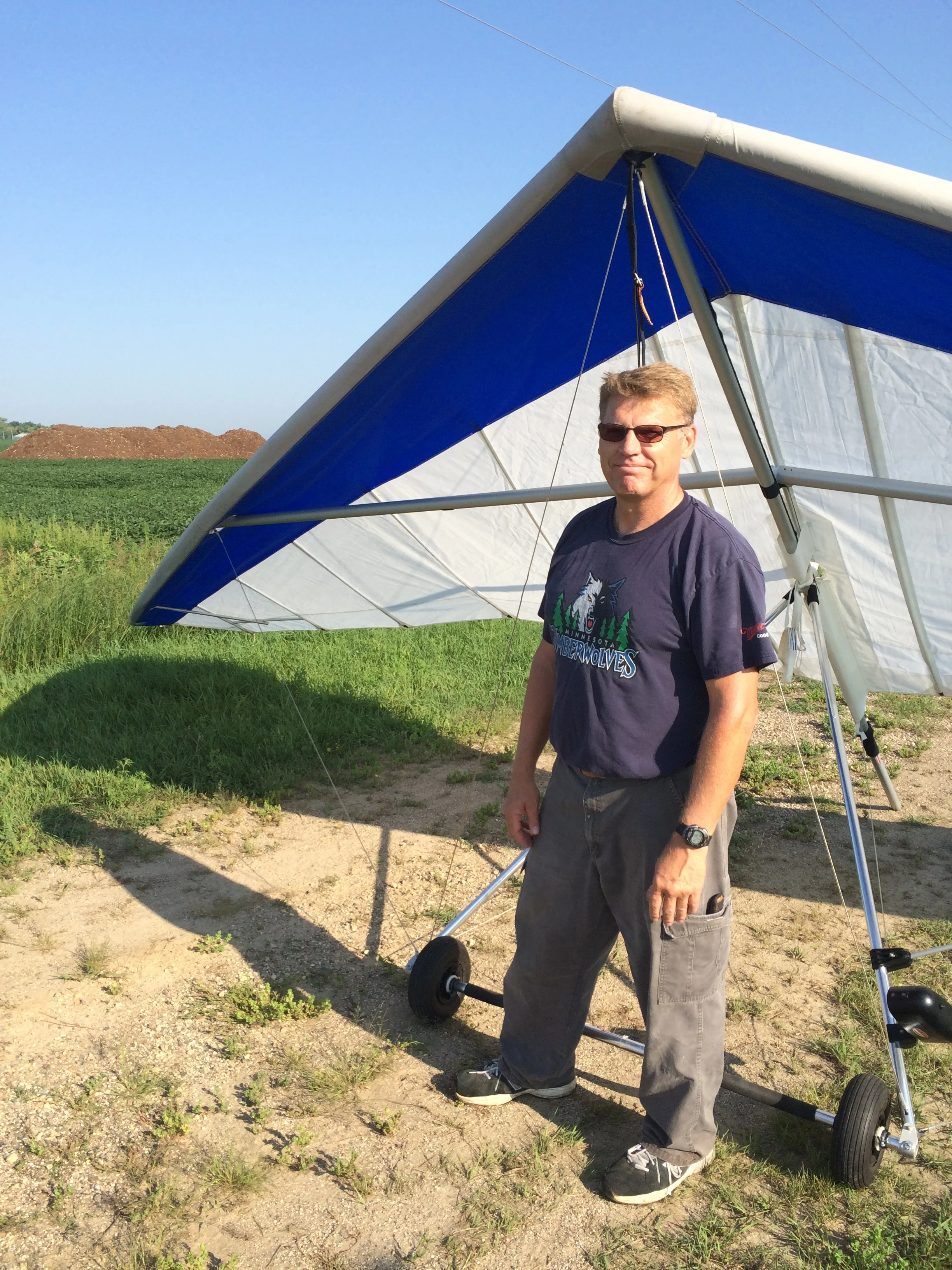Methods
How we progress in Minnesota Blue Water Hang Glider training...
In the beginning, students will enjoy trying to reach the goal of flying farther than the Wright Brother's first flight of 120 feet! The first lessons include being pulled into air on a Wills Wing Alpha Training glider with a method known as Scooter Towing.
Ground School: Practicing the basics of moving the glider on the ground, understanding how the harness works, learning the basic parts of the glider and the pre-flight procedures.
Practice low altitude flight and landing on feet with minor corrections. Basics of pitch control and roll control. All flights aim to be straight and level and will be under 10 feet in altitude.
As a student progresses in their flying skills altitude is increased to allow for greater training in flight characteristics of the glider.
In Flight Skills -Develop turn coordination, approach and landing skills, and flight plan decision making.
Weather awareness - learning about what effects flight and how to weather rules the day.
Flight elevation during this stage of training typically range from 10 feet up to 400 feet.
Most lessons last approximately 3 hours.
Get up and fly! Finally, after multiple flying day with varying conditions, ground schooling, consistant flying skills and good judgement students will progress to Wills Wing Falcon glider and will learn to truck tow through a method known as Platform Launching.
Understanding weather conditions and forcasting, thermaling, cross country flying and general aviation are key components during this phase of training.
Flight elevations from truck platform launch typically are between 1000 - 2000 feet with the hope of thermal flying.
Certifications:
Hang I is a Beginner Pilot rating given after showing flying proficiency to the USHPA instructor and successfully passing a written test. Hang I pilots in part demonstrate knowledge of a hang glider and have a solid command of strait and level flights and are able to land consistantly on their feet.
Hang II is a Novice Pilot rating given after showing flying proficency to the USHPA instructor and successfully passing a written test. Hang II pilots in part demonstate knowledge of glider flight characteristics, have a command of pitch and roll control and have demonstrated high altitude approach and landing techniques in a variety of air conditions.
A detailed list of required skills and proficiency are listed on the USHPA website
